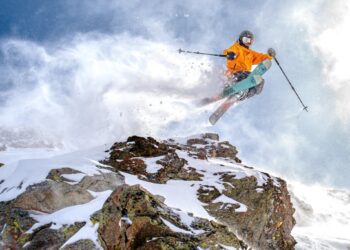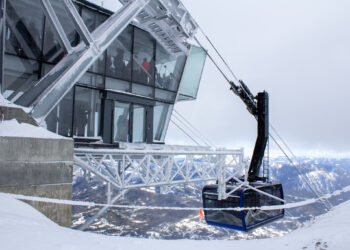Inside the detective work of contact tracers
By Mira Brody EBS STAFF
Editor’s note: Tracing a pandemic is a complicated task. While this story covers one component of many, the complexities of testing for and tracking COVID-19 continue to arise. This is the first in a series in which we uncover the intricacies of this pandemic in the Big Sky community.
BIG SKY – The closest thing Sophie Walder can compare her experience with COVID-19 to is surviving the destruction and upheaval of an F5 tornado, which she experienced while living in Tuscaloosa, Alabama in 2011. The contrast between those who can relate, and those who cannot, she says, is isolating.
Driving up to the Big Sky Medical Center triage clinic to get tested back in June, Walder was the only car there, and the gravity of the situation hit her. By her side, however, the team of health department officials, doctors and nurses called to check on her daily, ensure her symptoms were not taking a turn for the worse and reassure the 30-year-old local bartender.

Walder was the only car there, and the gravity of the situation hit her. Since she one of
the first people in town after the stay-at-home order was lifted to test positive, for the first
few days she was fielding calls from representatives from BSMC, Bozeman Hospital and
the county health department. OUTLAW PARTNERS PHOTO
These phone calls, sometimes multiple per day, were a part of a process called contact tracing.
While the term may be new to many, for Cindi Spinelli it’s just another day on the job. As communicable disease and immunization program manager at the Gallatin City-County Health Department, Spinelli and her staff of five are using contact tracing to track COVID-19 cases.
Contact tracing is a detective-style method used to manage a variety of communicable diseases, everything from salmonella to chlamydia, and is a key strategy for preventing the spread of COVID-19.
Spinelli and her team had a strong infrastructure in place before the pandemic hit, so they were able to scale up the volume of cases they could intake as COVID-19 struck Gallatin County. With the support of the county’s health department staff, who help make initial patient phone calls, and by working longer hours, they began tracking cases and zeroing in on patients and their contacts.
Spinelli says right now her department is working seven days a week to monitor all daily active cases.
“We have really good people,” she said. “Our team are all nurses and in my opinion I think nurses are super well trained in this. They have a lot of the right education—you have to be able to distill down signs and symptoms and communicate that with healthcare providers.”
The process of contact tracing is triggered by a positive test. A contact tracer will then be assigned the case, and call the patient for an initial interview to identify their exposure to the public, starting with their household and workplace contacts. That is the first phone call Walder received after her positive test results were returned on June 17, 24-hours after she began experiencing symptoms.
Since she one of the first people in town after the stay-at-home order was lifted to test positive, Walder says for the first few days she was fielding calls from representatives from BSMC, Bozeman Hospital and the county health department representatives.
“I had lost my sense of smell and taste,” said Walder, who tends bar at Brothel Bikes, a combination pub and bike shop in Big Sky. “It’s so distinct and the craziest thing I’ve ever experienced, not having two senses.”
Testing for COVID-19 largely takes place in drive-through and triage clinics, as Walder’s did, so a contact tracer is often the first person a patient speaks to after receiving a positive test result. Spinelli’s team also ensures patients don’t need immediate care. If they do, her staff will help them connect with their healthcare provider.
In the initial interview, contact tracers will look back 48 hours from when a patient began exhibiting symptoms and will identify close contacts. The Centers for Disease Control and Prevention define close contacts as anyone within six feet of a patient for 15 minutes or longer.
In Walder’s case, the contact tracers reached out to her employer and contacted those who were at risk of contracting the virus. When a workplace cluster is suspected, the contact tracing team will work directly with the business, assign sanitarians and quarantine as needed to reduce further transmission.
“If I could shed any light or knowledge on this experience it’s that if you were in contact with someone who tested positive, the health department or your employer is going to reach out to you and the first question they’re going to ask is ‘Were you wearing a mask?’” Walder said, “which is the most appalling thing about people not wanting to wear a mask. That is the number one rule.”
In addition to masks, another key element to eliminating transmission is distance. Mask or no mask, Spinelli says, keeping a six-foot radius or more will prevent the spread of airborne germs.
“Walking by someone in a store does not count as a close contact,” she said. “But people in your household, those would be close contacts.”
After the initial interview, the patient is instructed to quarantine for 10 days from when their symptoms began, the last three days of which must be devoid of fever without the use of medication. The contact tracing team then moves swiftly to contact all those within that 48-hour exposure window—a task that can range from a single household to 30 people. Walder says she was asked to recount her social activities day by day from the time she had symptoms.
Phased reopening precautions set in place by state and county health officials make this stage of a contact tracer’s job significantly easier—Spinelli uses gymnasiums as an example.
“A lot of the gyms have set up their areas where they can have people exercise individually, so if we get someone who went to an exercise class but all those six-foot precautions were in place, then none of those people were at risk,” she said. “That’s satisfying.”
All those in contact with the initial case are then tested and moved through the same process. If a contact tests positive but it not yet symptomatic, a contact tracer will check on them daily and instruct them to remain isolated for 10 days.
Walder was sick for seven days, and she says each day her symptoms were different, from headaches, to lost senses, to extreme fatigue and fever. Each day, the contact tracer nurses would call to check on her.
“That’s the other thing people aren’t realizing because we do live in a bubble extracted from the real issue,” said Walder. “People aren’t understanding how bad the virus really is. They have this nonchalant attitude.”
Another important data point Spinelli and her team watch closely is wastewater testing. So far, most spikes of COVID-19 in wastewater have mimicked the number of active cases in their respective communities. Spinelli says if no cases paralleled with a spike in wastewater data, her team would test heavily in that area to understand why those numbers were so high.
Walder says an unfortunate stigma exists surrounding COVID-19 patients, and while some communications she received after testing positive were intrusive and rude, she says she is thankful for the group of friends she refers to as her “quarantine group” who kept in touch throughout. She’s also thankful for the nurses and doctors who talked her through the sometimes overwhelming experience.
“I definitely broke down a few times,” Walder said. “It’s so unknown we don’t really know anything about this virus. Personally, I think they did as best of a job that they could. The whole time I was sick, I couldn’t move, they were really helpful. I definitely felt like I was in good hands.”
The lack of resolution is a theme we’ve all had to come to terms with during this pandemic. Spinelli’s experience is that there’s no solution she can offer to her patients. But, as she knows all too well, with the right tools uncertainty is a bit easier to navigate.
“That’s the unsatisfying thing,” she said. “When we do contact tracing for other diseases we can offer them a treatment. Right now, we don’t have anything to offer except finding other people who were exposed.”
On the patient side, Walder’s frustration stems from working for a living wage in Big Sky and the pressure one can feel to show up to work and not let your coworkers or employers down.
“Employees are in a very difficult place right now in this town because if they test positive, they could have just screwed over the whole workforce,” Walder said. “It’s a change in times. We’ve never seen this town so busy.”
Stay tuned to EBS and explorebisky.com for the next installment of this contact tracing series where we look into the impacts of quarantine on local businesses.















